School Buildings in 2015: Designing for Students
Seating in Multipurpose Spaces
Most K-12 school buildings require spaces for large group gatherings such as gymnasiums, cafeterias, and auditoriums. A common and favored strategy is to make such rooms serve multiple purposes since large gatherings for different reasons don't necessarily occur at the same time. The design challenge is found in creating a single room that can accommodate the different spatial and functional needs of those different uses. Further, a single large room may not always be used to capacity; in fact, it may be more desirable to allow several small groups to use portions at the same time.

Photos courtesy of Hussey Seating Company
A combination of fixed and telescopic seating creates a full auditorium (left). When the telescoping seating is closed, it creates a dividing wall and smaller auditorium on one side (middle) and a usable open area on the other (right).
A common design strategy for multipurpose spaces is to incorporate seating that is movable in some manner to allow greater flexibility in the use of the space. Telescopic seating has typically been used in school gymnasiums in the form of bleachers. However, it is also possible to use the telescoping concept with a platform system in a more contemporary manner with a variety of seating types for different comfort levels. When electrified, these telescoping systems can be operated easily by one person to convert gymnasiums or other spaces from open areas to seating areas. Adding the use of fully portable chairs, benches, or other seating allows even more opportunities to meet the needs of different student activities. Taking that one step further, “tip and roll” platforms can be moved into place to provide a presentation space or additional seating for particular activities.
Combining telescoping seating with fixed-in-place seating can provide other choices and options in how large group spaces are used. For example, in Michigan, the Whitmore Lake High School needed a large auditorium but they didn't need it all the time. They did need some smaller open spaces that could provide other functions while a smaller seating area in front of the stage area was sometimes adequate too. The solution was found in a rather innovative combination of seating types. In front of the stage, seven rows of stepped, fixed seating were installed. Behind that an area of telescoping seating on platforms was installed such that when open, it looked like a natural extension of the seating in the auditorium. However, by using a reverse folding operation, the closed seating forms a dividing wall between the fixed seating and the space otherwise occupied by the open seating. This approach allows that space to be used for other activities such as lunch, community functions, and classes. Having the flexibility in the way this space is used allows students to learn in environments suited to the activity.
Exterior Learning Spaces
Learning spaces don't need to be limited to indoor spaces. In fact there are a lot of creative ways that outdoor learning spaces can be incorporated into school designs to allow hands-on learning of outdoor focused subjects. In multistory schools, particularly in urban settings, rooftop decks and elevated deck areas provide a safe and structured area for students to learn, play, and enjoy the outdoors. Perhaps one of the biggest outdoor learning opportunities is to see how things grow in gardens. But when land area is not available, then planters can be used on top of outdoor decks to create the same opportunity. Finished, accessible outdoor spaces can be created by using wood deck systems that rest on adjustable screwjack pedestals to support and level modular wood deck tiles. Outdoor deck systems can also provide pedestrian access to other features such as planted green roofs for students to discover and monitor the benefits of that sustainable design attribute.
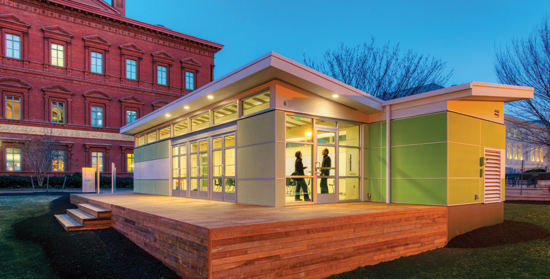
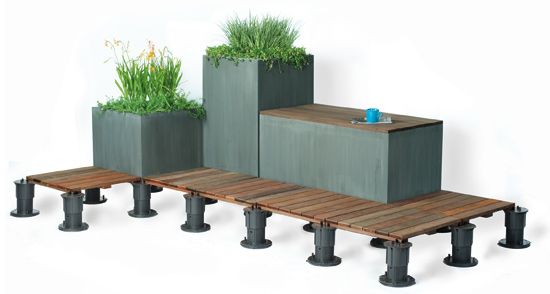
Photos by Sam Kittner, courtesy of Bison Innovative Products
Outdoor learning spaces with elevated decks and planters can be used on roof areas or on modular classroom structures like this one designed by Perkins+Will.
This strategy of including outdoor learning space in schools has been incorporated into a demonstration project carried out by the international design firm of Perkins+Will in conjunction with numerous sponsors. Recognizing the popular use of modular units to address school expansion needs, they have put together a healthy, sustainable, and flexible modular classroom designed to meet the needs of a 21st century classroom. In addition to addressing the range of interior design needs for students and teachers, they have included outdoor learning and garden patio areas as part of the basic design of the module. This garden patio allows students to interact directly with nature and the outdoors, rather than just reading about it or learning from electronic media.
2. How Students Move
Students, teachers, staff, and visitors all move through a school building by walking—how much and how far is often a matter of design. In this era where only about 5 percent of all students walk or ride their bike to school, concerns about encouraging more physical activity in buildings for good health and to fight childhood obesity are certainly valid. Similarly, safety in schools has been an ongoing public concern suggesting more attention be given to entrances and exits from the building. In this context, the process of moving, wayfinding, and controlling access in a public school building is part of the overall equation, driving strategies for successful designs.
Controlling Entrance and Interior Doors
The role of entrances and doors in contemporary schools buildings is a bit paradoxical. On the one hand, they need to be open and inviting for students, parents, and community members. On the other hand, they need to be restrictive and controllable to address safety and security concerns. Add to that the need to function seamlessly while standing up to the high traffic and abuse of any educational environment and it is easy to see why doors consume a fair amount of design time.
A big part of the solution to the functionality of doors lies in how they are operated which usually means selecting the appropriate control hardware. Since most school entrance and corridor doors need to meet code egress requirements, heavy-duty, durable, exit devices are often required. Some have smoother, reduced projection touchbar assemblies which are more aesthetic and minimize catch hazards. Similarly, heavy-duty door closers can be applied to these doors that use a hydraulic control system to allow for a full range of spring power adjustment and backcheck that can be specified to meet different conditions. Whenever controlled release and closing of doors is necessary for safety or convenience, door holders composed of a door-mounted catch plate and a floor- or wall-mounted electromagnet are appropriate to use in conjunction with door closers. Products are available with built-in protection and low residual magnetism so they release easily, even in applications meeting ADA requirements, with minimal spring force door closers.
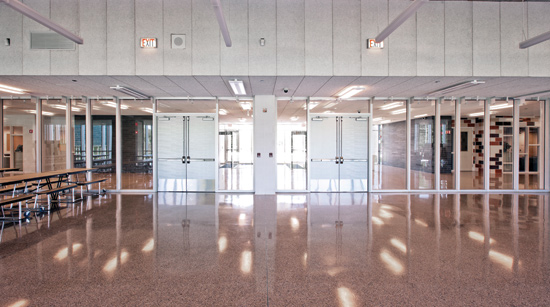
Photo courtesy of DORMA
Doors in schools can be designed and configured to foster appropriate movement of students while maintaining control for safety.
Of course, doors need to be locked and secured at different times and in different locations. Many schools are incorporating an electrified system that includes a central console for remote control and monitoring of doors around the school building. This requires electrical power coordination to those doors but modular systems are commonly available to meet the specific needs of virtually any electric lock system. A well-organized installation for individual or multi-door systems may include locking devices, access controls, and station controls all coupled with consoles for remote control, annunciation, and interface with fire and life safety systems.
Sliding Doors
Not all doors need to be swinging nor do they all need to be limited to a single leaf. The use of sliding doors in single or multiple panels not only allow access, they can also create appropriately sized, transformative study spaces. When closed, sliding multiple door panels produce privacy on demand with the option of an embedded swinging door to maintain access. When opened by students or teachers, larger team study spaces can be easily created. Such sliding doors are typically made out of aluminum frames with a very high recycled content adding to their green and sustainable attributes. Since aluminum also typically requires no on-site finishing, there is no contribution of harmful vapors to the indoor air. Inside the aluminum frames, glass panels can provide the additional advantage of natural or borrowed light. This means that the space being enclosed does not need to be dark simply because the doors are shut. If privacy is needed, then it is entirely possible to use glass that is translucent, tinted, or otherwise treated to achieve the desired effect.

Photo courtesy of Space Plus, a division of The Sliding Door Company
Multi-panel sliding doors can enclose a small study room or open up to create a larger collaborative space.
A significant advancement related to the way students move about a building, is their increasing use of tablets, laptops, or smartphones for taking notes or learning electronically. In other words, students are moving around the school with a “bring your own devices” (BYOD) mindset. Allowing for wireless connections to access the appropriate educational information creates great freedom and flexibility in their use and the opportunities for learning. It also means that movable portions of walls and sliding doors don't need to provide wired connections, but they do need to allow appropriate separation of space when students need to work in collaborative environments on group assignments on their own devices. Sliding door solutions are being used to accommodate this trend in many small and large group study rooms as well as larger, open, collaborative work areas.
Making High-Traffic Areas Durable
School common areas such as corridors are, by nature, high foot traffic areas used virtually every day that school is in session. That means they need to be easily cleaned daily and the flooring material needs to be durable enough to handle all the traffic, cleaning, and other demands over the life of the building. One durable and sustainable choice for such flooring, stairs, and even corridor walls, is terrazzo, which is a traditional material that has been modernized to meet current needs. Terrazzo is a composite system consisting of either a cement or resinous matrix with an aggregate of marble, granite, onyx, or glass (in resinous systems). It is poured-in-place, cured, and ground to a smooth hard surface finish. Terrazzo is non-porous and does not support microbial growth, nor does it allow moisture to accumulate, contributing to a mold-free, healthy environment. Additionally, terrazzo is comprised of zero-VOC materials, and exhibits little to no off-gassing over the life of the cured material. As a very low-maintenance system, terrazzo can be cleaned with an environmentally friendly, neutral-pH cleaner which will not irritate sensitive eyes or noses.
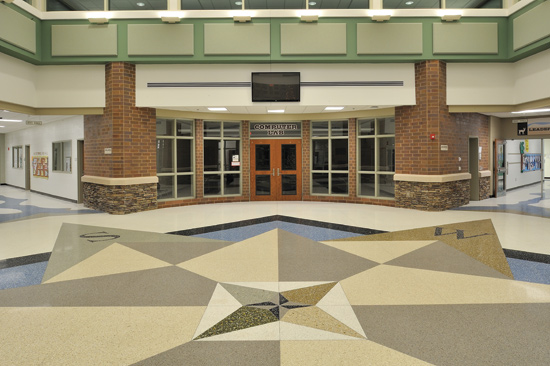
Photo courtesy of National Terrazzo & Mosaic Association
Terrazzo flooring can incorporate designs that assist with wayfinding or educational topics.
The custom nature of terrazzo installations means that designs of all types and colors can be incorporated into the flooring. For example, wayfinding information can become part of the floor to help students become oriented and find other areas of the school building. Alternatively, maps, historical events, scientific facts, numbers, poems, or other educational information can be displayed in the floor for educational and space-making purposes. And in the interest of fostering school spirit, athletic mascots and school seals can also be included in prominent locations.
In regard to durability, terrazzo has been documented numerous times to withstand not only normal wear and tear, but dramatic events such as floods and hurricanes. The Central Intermediate School in Ottawa, Illinois, was inundated by flooding in 2008 and the only sections found perfectly intact were the terrazzo corridor floors. When the decision was made to rebuild the school in a new location, terrazzo was selected not only for the corridors, but also for the cafetorium and restrooms as well. “That the school district installed terrazzo again in the new building is a testament to their recognition of its longevity and durability,” said George Reigle, project architect with Green/Associates of Deerfield, Illinois.
Notice
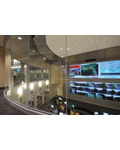
www.pyrosafeglass.com

www.BisonIP.com
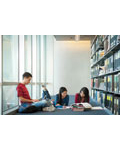
www.certainteed.com/airrenew

www.dorma.com/
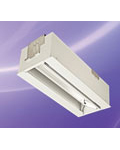
www.elplighting.com/
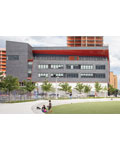
www.endicott.com/
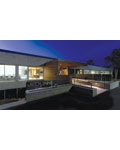
www.SunGuardGlass.com/
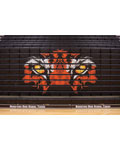
www.husseyseating.com/
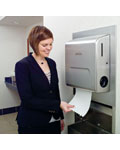
www.kcprofessional.com/
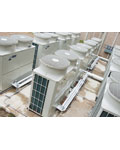
www.MitsubishiPro.com/
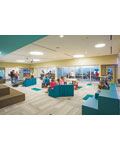
Architect: Hollis + Miller Architects
www.NanaWall.com/
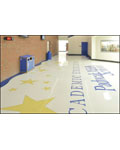
www.ntma.com/
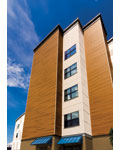
www.nichiha.com/
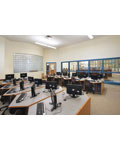
www.pittsburghcorning.com/
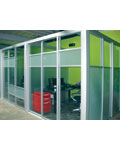
www.spaceplus.com/

www.us-concrete.com/aridus/
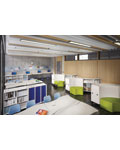
www.vs-network.com/









